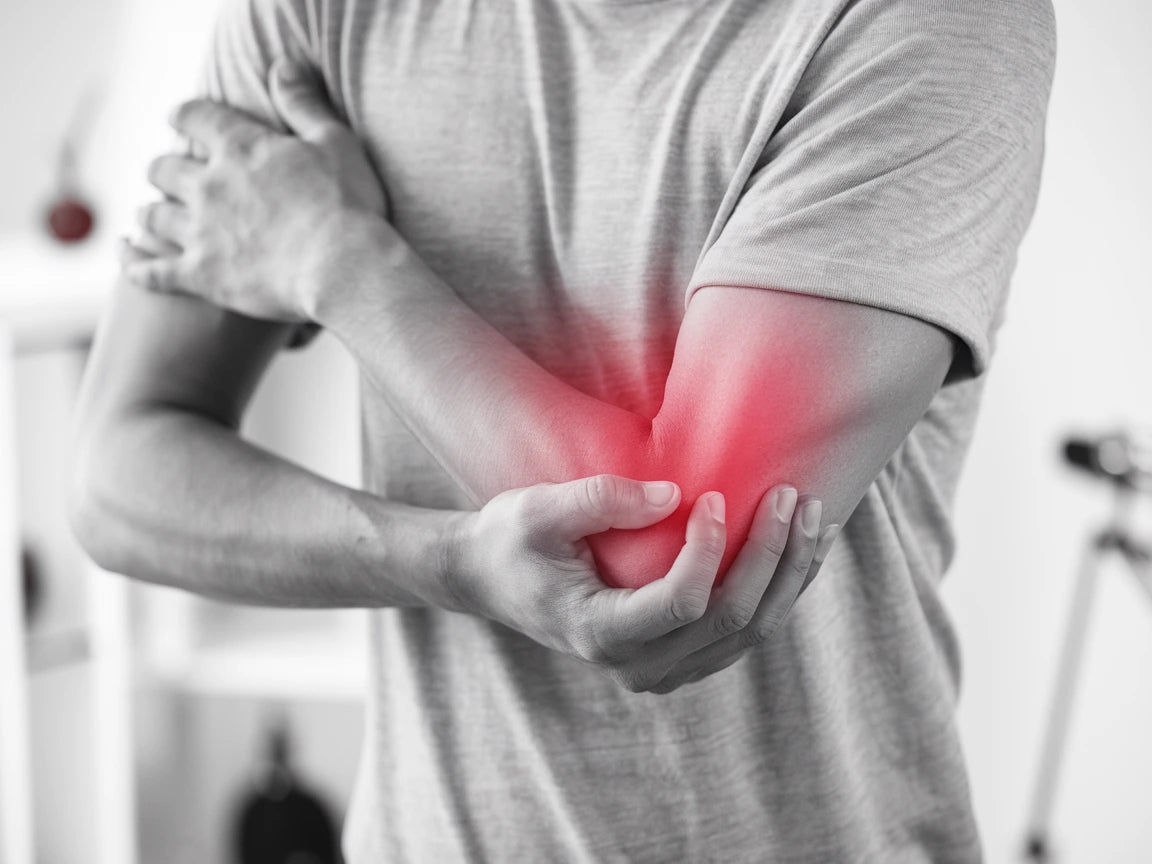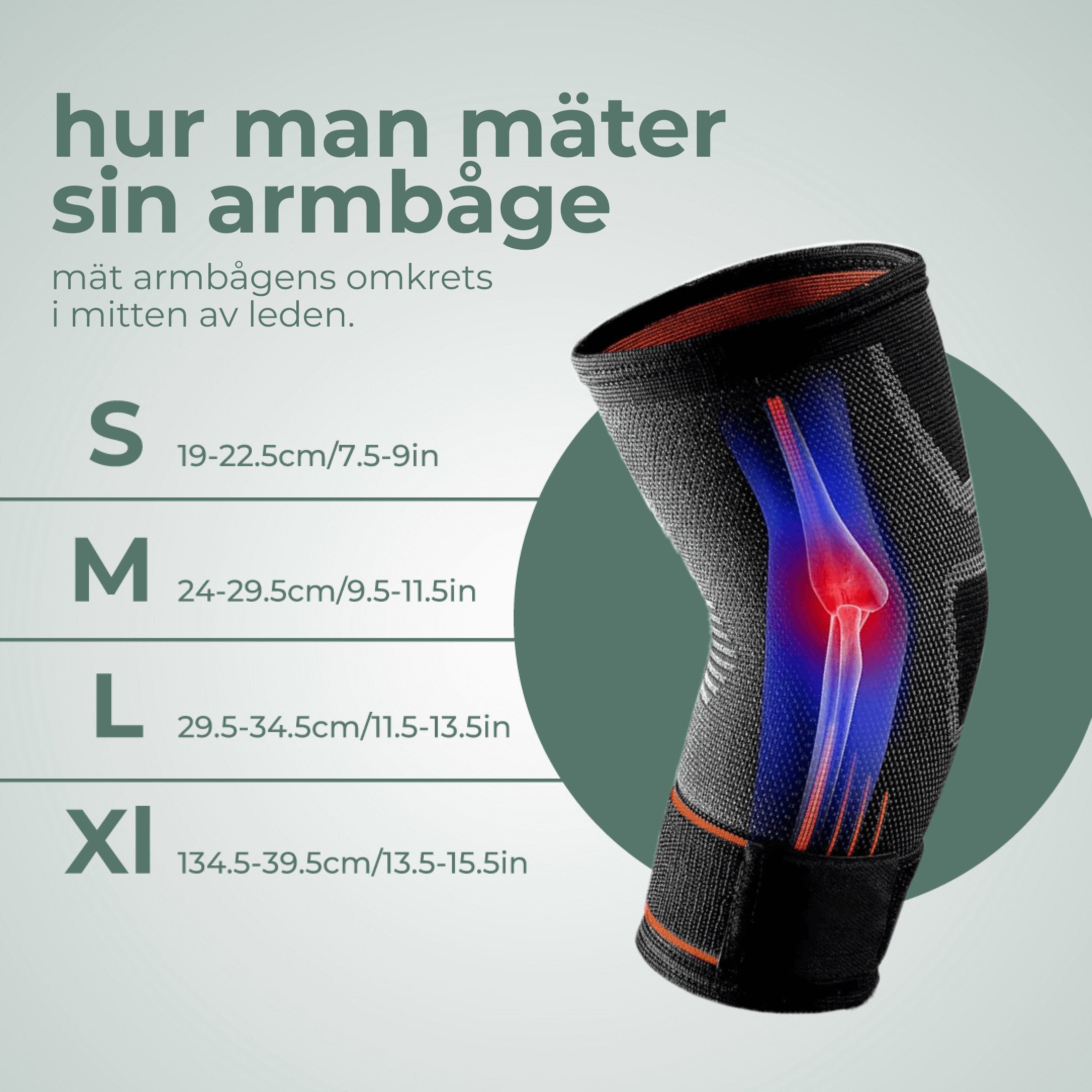Osteoarthritis in the Elbow: Symptoms, Causes, and Treatment

Osteoarthritis in the elbow, also known as elbow osteoarthritis, is a degenerative joint disease that affects the elbow joint. This condition can cause pain, stiffness, and limited mobility in the elbow. In this article, we will go through the most common symptoms, causes, and treatment options for osteoarthritis in the elbow.
What is Elbow Osteoarthritis?
Elbow osteoarthritis is a degenerative joint disease where the cartilage wears down, causing pain, stiffness, and reduced mobility. Treatment may include physical therapy, medication, and sometimes surgery.
Unlike knee osteoarthritis or shoulder osteoarthritis, elbow osteoarthritis is less common because the elbow is not a weight-bearing joint. However, the condition can still affect individuals with previous injuries or those who repeatedly stress their elbows in their profession or through sports activities. The joint cartilage in the elbow breaks down over time, leading to friction between the bones in the joint and potentially causing inflammation in the elbow.
Symptoms of Osteoarthritis in the Elbow
Osteoarthritis in the elbow often develops gradually over time, and symptoms can vary in intensity. Common symptoms include:
- Elbow Pain: This is often the most prominent symptom. The pain may be constant or worsen with movement and loading of the joint.
- Stiffness: The elbow may feel stiff, especially in the morning or after longer periods of inactivity. It may take a while to "warm up" the joint.
- Limited Range of Motion: You may experience difficulty fully bending or straightening your elbow.
- Swelling: Inflammation in the joint can lead to visible swelling around the elbow.
- Crepitus: You may hear or feel a crackling or popping sound when moving your elbow.
- Weakness: Muscle strength around the elbow may decrease due to pain and reduced use of the joint.
Many patients describe experiencing pain in their elbow, particularly with certain movements. Symptoms can resemble tennis elbow or golfer's elbow but differ as tenderness is often more generalized within the joint. Resting pain and nighttime aches may occur in later stages. Numbness can sometimes also be experienced, but this is more often related to nerve compression than to osteoarthritis itself.
Causes of Osteoarthritis in the Elbow
Several factors can contribute to the development of osteoarthritis in the elbow:
- Age: The risk of osteoarthritis generally increases with age as joints are subjected to wear over time.
- Prior Injuries: Fractures, dislocations, or other traumatic injuries to the elbow can increase the risk of developing osteoarthritis later in life.
- Overuse: Repetitive movements or prolonged stress on the elbow, often related to work or sports, can accelerate joint degeneration.
- Genetics: A hereditary predisposition for osteoarthritis can increase susceptibility to developing this condition in the elbow.
- Obesity: Although not a weight-bearing joint, excess weight can indirectly affect through systemic inflammation.
- Other Diseases: Conditions like rheumatoid arthritis may present similar symptoms but are caused by different mechanisms.
It is important to rule out other conditions that could cause similar issues, such as infection within the joint or inflammatory arthritic diseases. Diagnosis is usually made after a clinical examination and sometimes with imaging studies like X-rays or MRIs to confirm suspicions.< / p >
Diagnosis and Treatment of Elbow Osteoarthritis
To effectively treat elbow osteoarthritis, it is important to obtain an accurate diagnosis and choose the right treatment method:
| Behandlingsmetod | Beskrivning | Fördelar med Armbågsstöd |
|---|---|---|
| Fysioterapi | Övningar för att stärka och öka rörligheten | Stödjer under övningar och främjar korrekt rörelse |
| Smärtlindring | Antiinflammatoriska läkemedel vid behov | Kan minska behovet av medicin genom naturligt stöd |
| Livsstilsförändringar | Anpassning av aktiviteter för att minska belastning | Armbågsstödet underlättar dagliga aktiviteter |
| Värme- och kylbehandling | Lindrar smärta och stelhet | Kompletterar behandlingen genom att ge stabilt stöd |

How Elbow Supports Can Help with Osteoarthritis in the Elbow
The elbow support offers several benefits for individuals suffering from osteoarthritis in the elbow:
- Provides support and stability to the affected elbow, which can reduce pain during movement and load.
- Helps distribute pressure evenly across the joint, which can decrease localized stress and irritation.
- Can be used during daily activities to provide continuous support and reduce joint overload.
- Supports rehabilitation exercises and can help maintain joint mobility.
- Prevents further injury by limiting extreme movements that may worsen osteoarthritis.
Many patients with osteoarthritis in the elbow also experience similar issues in other joints, such as osteoarthritis in fingers or knees. By using appropriate supports for each affected joint, overall strain on the body can be reduced, contributing to a better quality of life. Especially when there are tender points around the elbow joint, a support can alleviate direct pressure that exacerbates discomfort.
Buy nowConclusion
Osteoarthritis in the elbow can be a painful and limiting condition, but with the right treatment and support, many individuals can effectively manage their symptoms and maintain good elbow function. By combining medical treatments, physiotherapy, and the use of supportive aids like the Elbow Support, many can experience an improved quality of life. It is important to work closely with healthcare professionals to develop an individualized treatment plan and regularly evaluate and adjust treatment as needed.
Osteoarthritis treatment focuses on symptom relief and functional improvement rather than completely curing the condition. By understanding the symptoms and possible measures, patients can make informed choices about their care and take an active role in managing their illness.
Frequently Asked Questions (FAQ)
Can elbow arthritis be completely cured?
Osteoarthritis cannot be completely cured, but the symptoms can often be effectively managed with the right treatment and lifestyle adjustments.
How often should I use the elbow support for arthritis?
The frequency of use may vary, but many find it beneficial to use the support during activities that strain the elbow and during training. Consult your doctor or physiotherapist for personal recommendations.
Can exercise worsen arthritis in the elbow?
The right type of exercise can actually be beneficial for arthritis. Low-impact exercises and strength training can help strengthen the muscles around the joint and improve mobility.
Is surgery necessary for osteoarthritis in the elbow?
Surgery is usually considered only in severe cases where conservative treatment has not provided sufficient relief. Most cases can be managed without surgical intervention.
